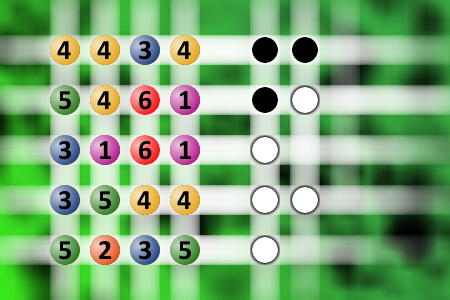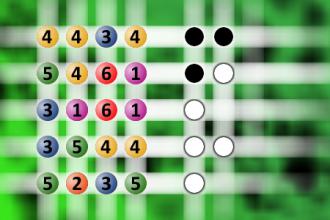What a winning combination?
The computer chose a secret code (sequence of 4 digits from 1 to 6). Your goal is to find that code. Black circles indicate the number of hits on the right spot. White circles indicate the number of hits on the wrong spot.
18 new Halloween jokes from 2020
Q: Where do ghosts buy their Halloween candy?
A: At the ghost-ery store!
Q: What do owls say when they go trick or treating?
A: Happy Owl-ween!
Q: What do ghosts give out to trick or treaters?
A: Booberries!
Q: Who did Frankenstein go trick or treating with?
A: His ghoul friend.
Q: What Halloween candy is never on time for the party?
A: Choco-LATE!
Q: Which type of pants do ghosts wear to trick or treat?
A: Boo jeans.
Q: What makes trick or treating with twin witches so challenging?
A: You never know which witch is which!
Q: What monster plays tricks on Halloween?
A: Prank-enstein!
Q: What fruit do scarecrows love the most?
A: Straw-berries.
Q: What does a witch use to do her hair?
A: Scarespray!
Q: What happens when a ghost gets lost in the fog?
A: He is mist.
Q:How do you fix a cracked pumpkin?
A: A pumpkin patch.
Q: Why don’t vampires have more friends?
A: Because they are a pain in the neck.
Q: What position does a ghost play in hockey?
A: Ghoulie.
Q: What do you give a vampire when he’s sick?
A: Coffin-drops.
Q: What is a ghost's nose full of?
A: Boooooogers!
Q: Have you heard how popular the local cemetery is?
A: People are just dying to get in.
Q: Why was the broom late?
A: It over swept.

